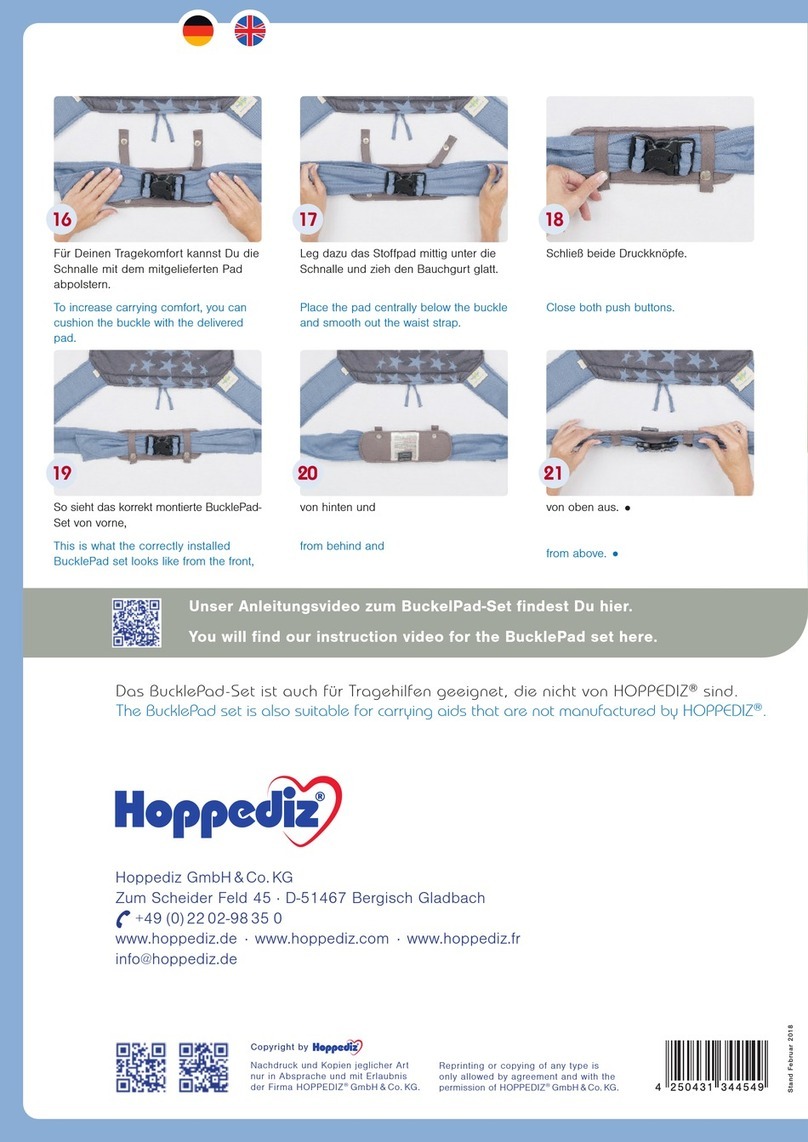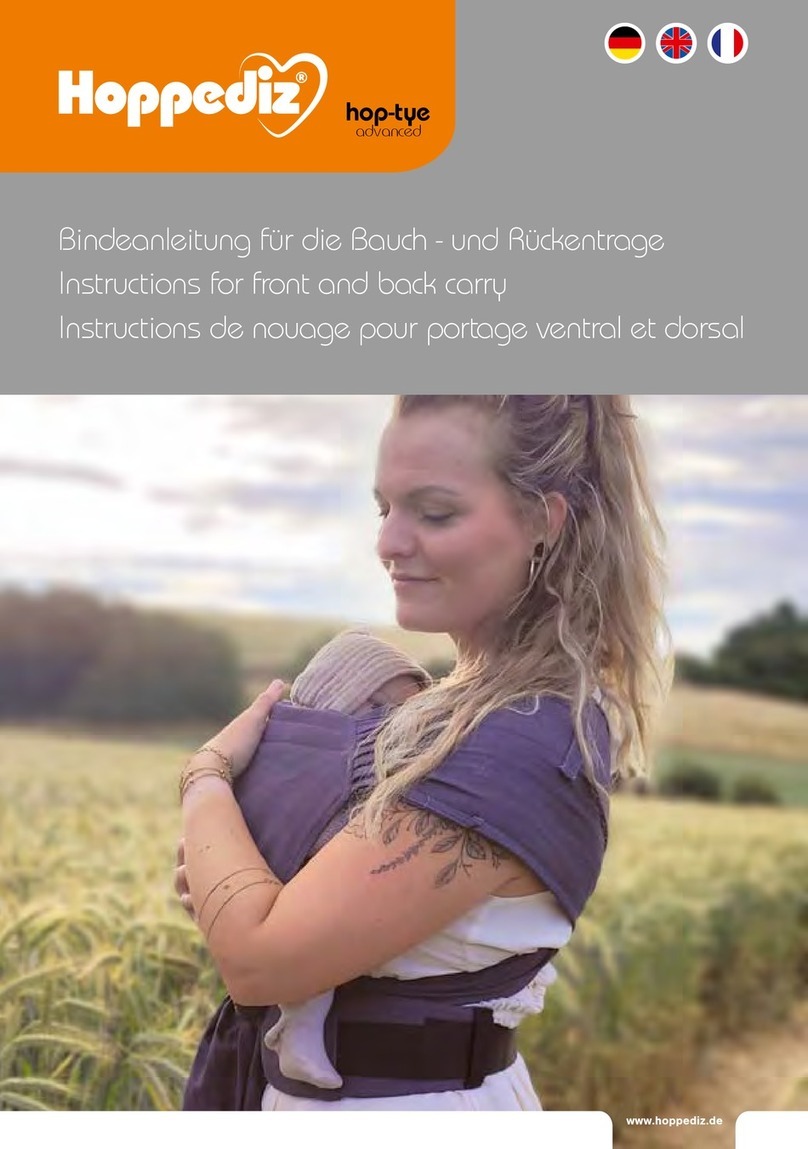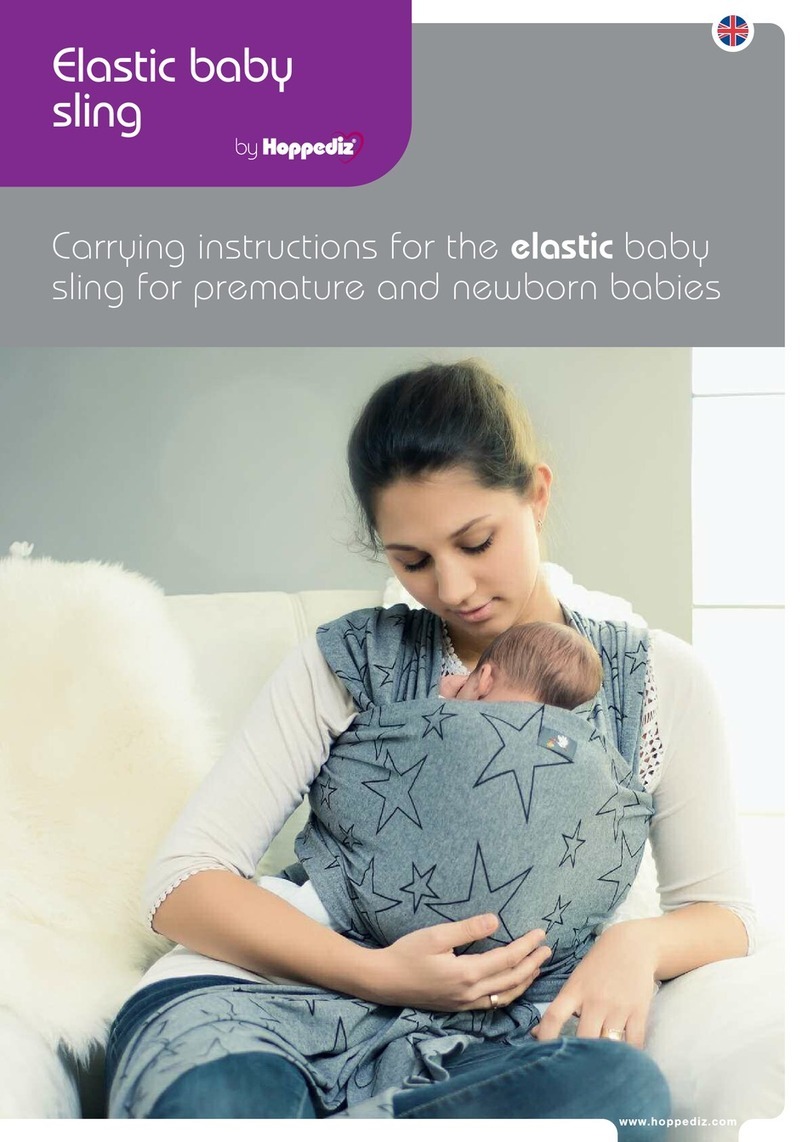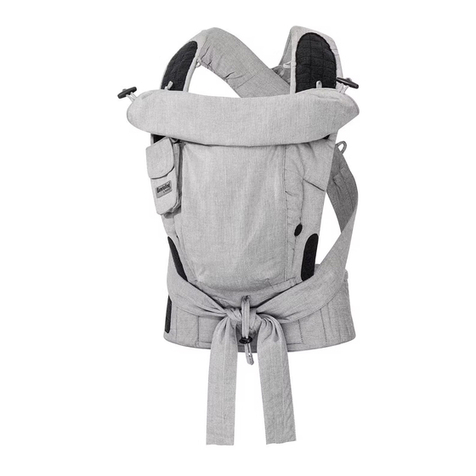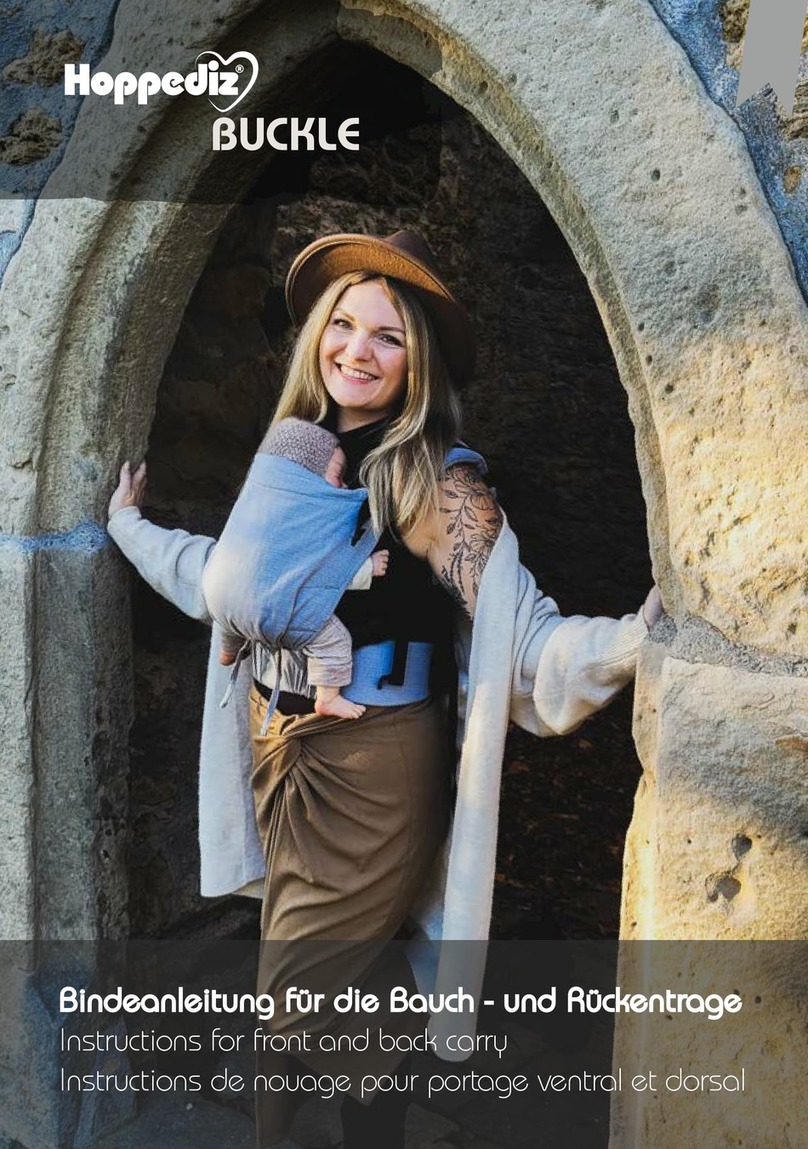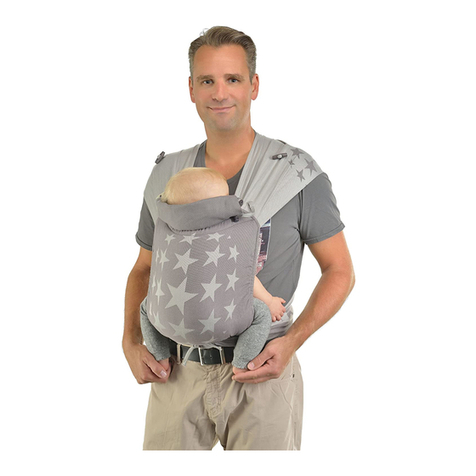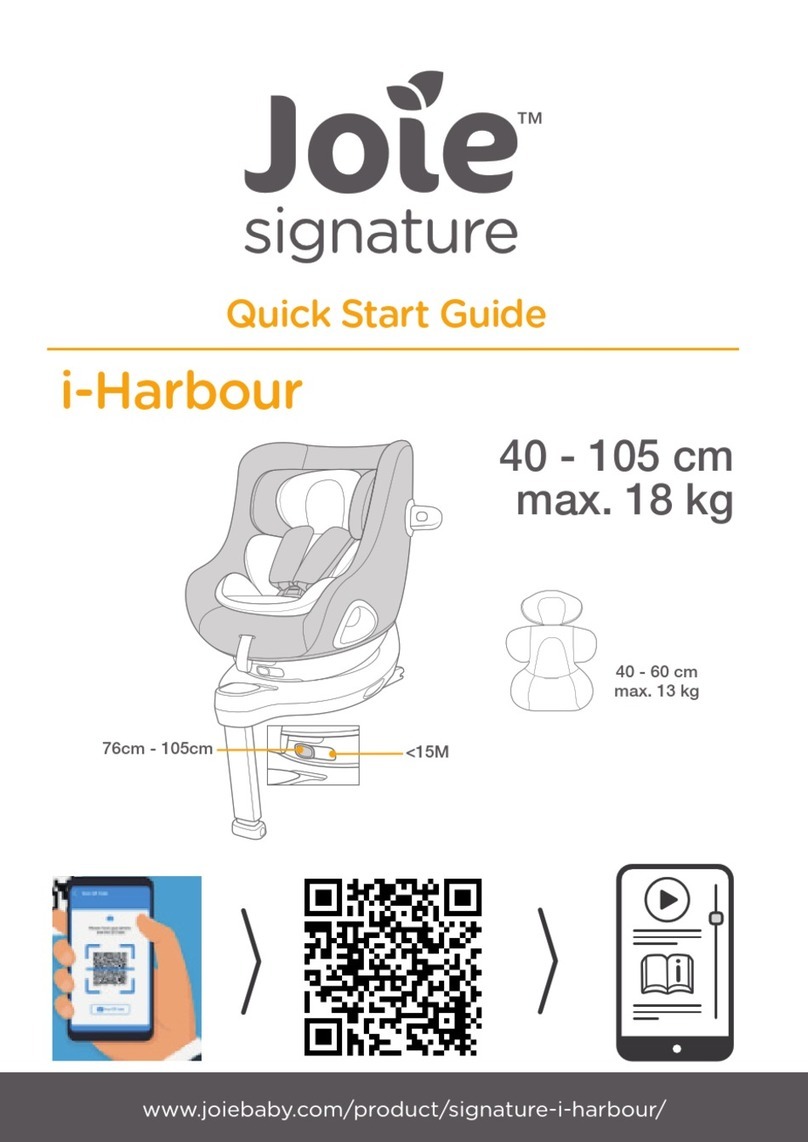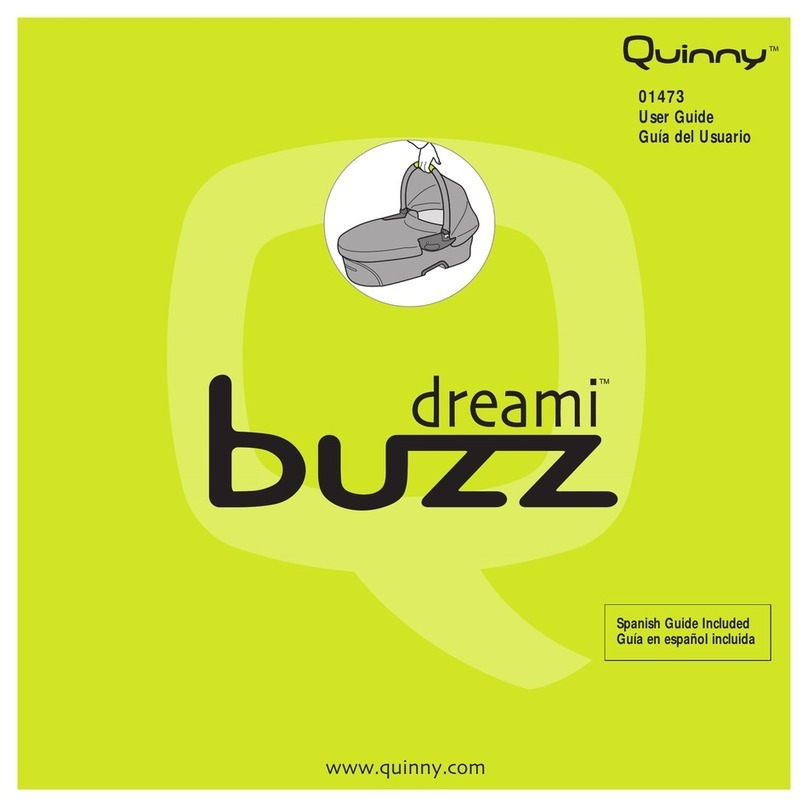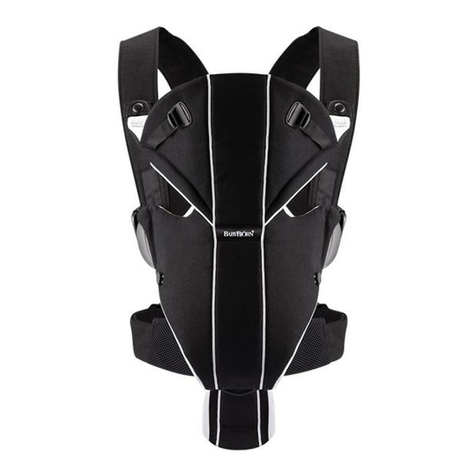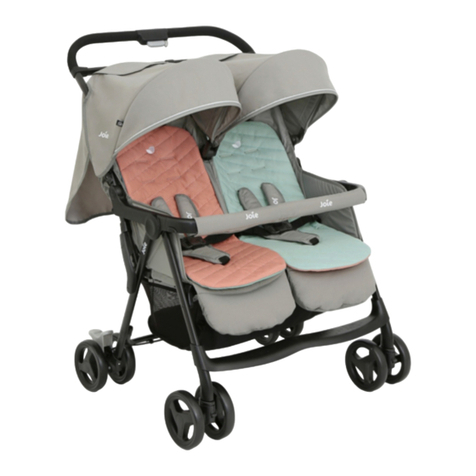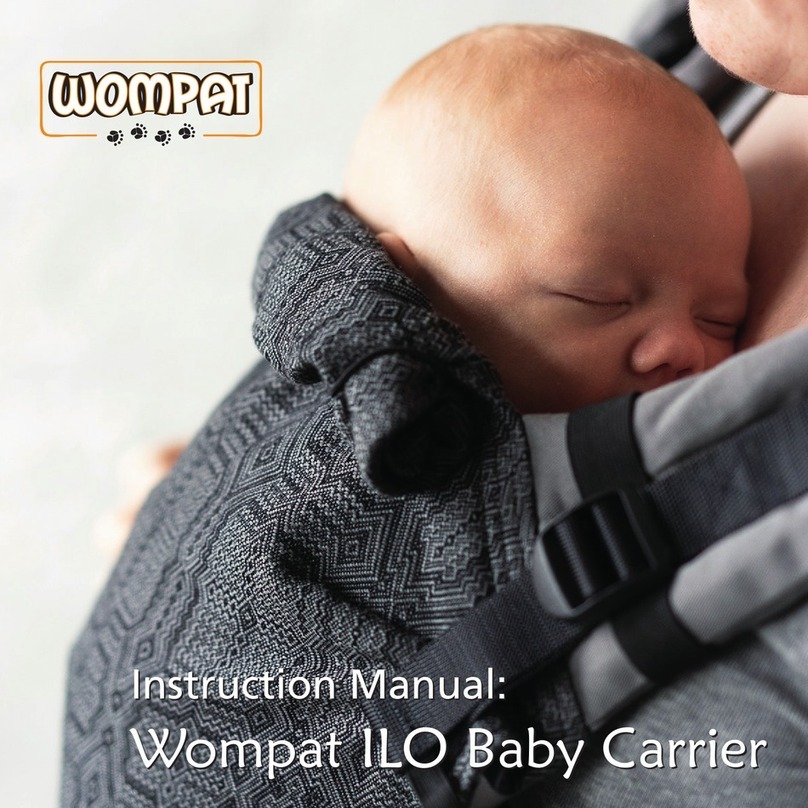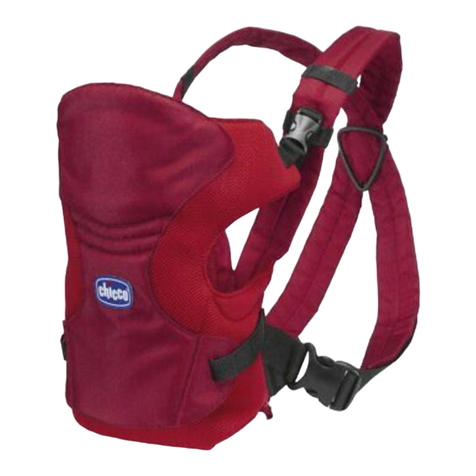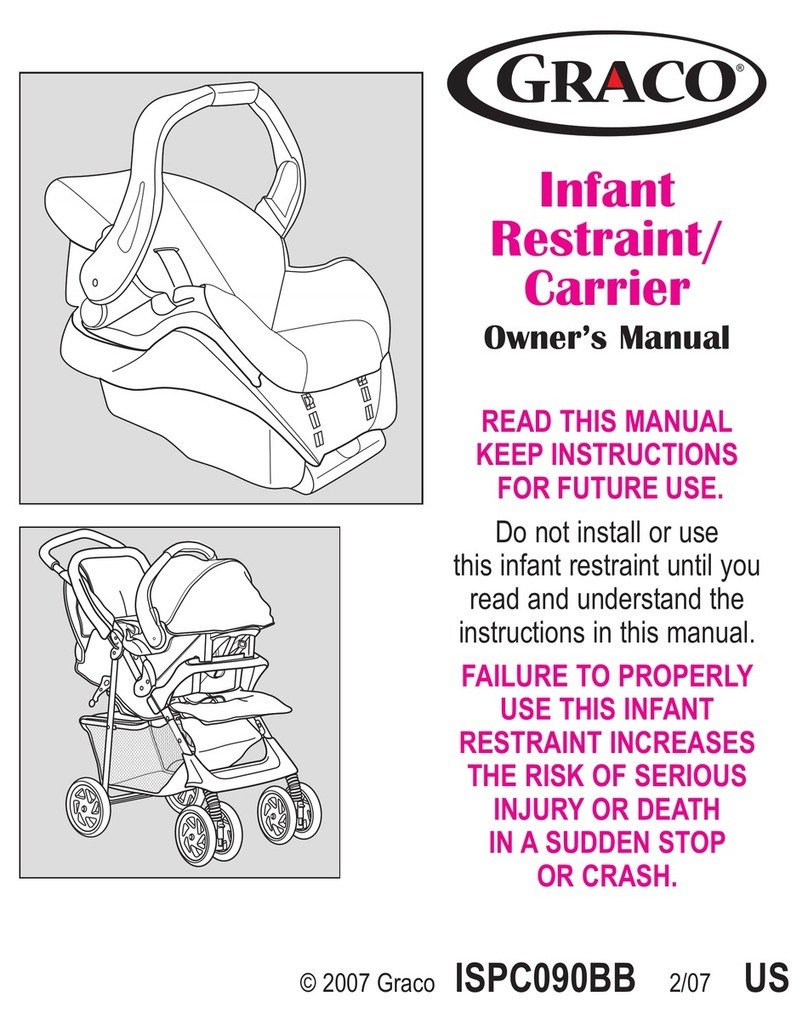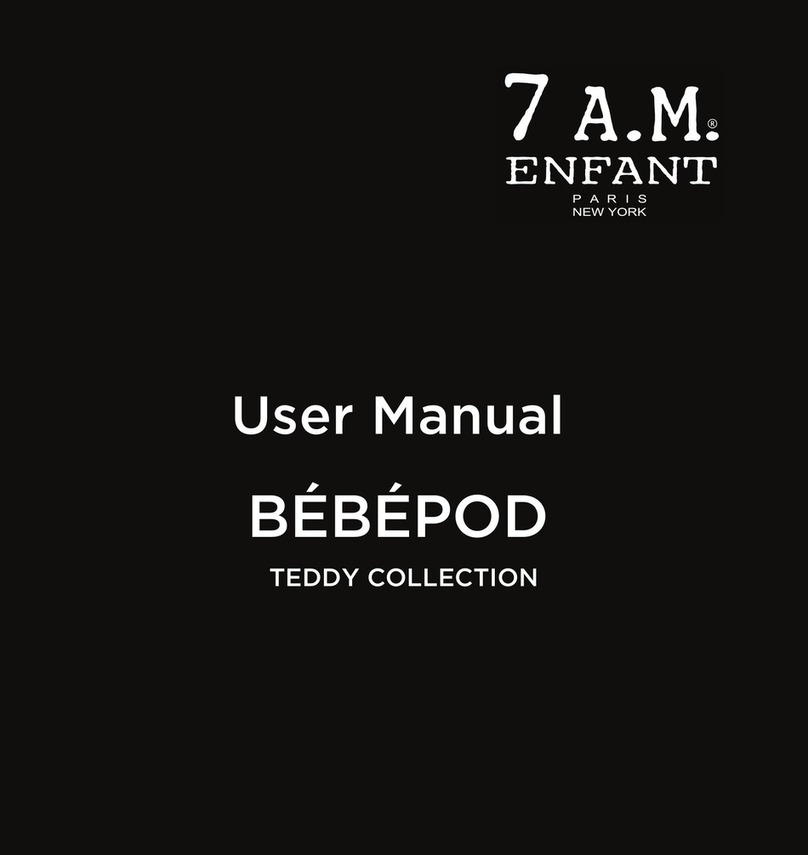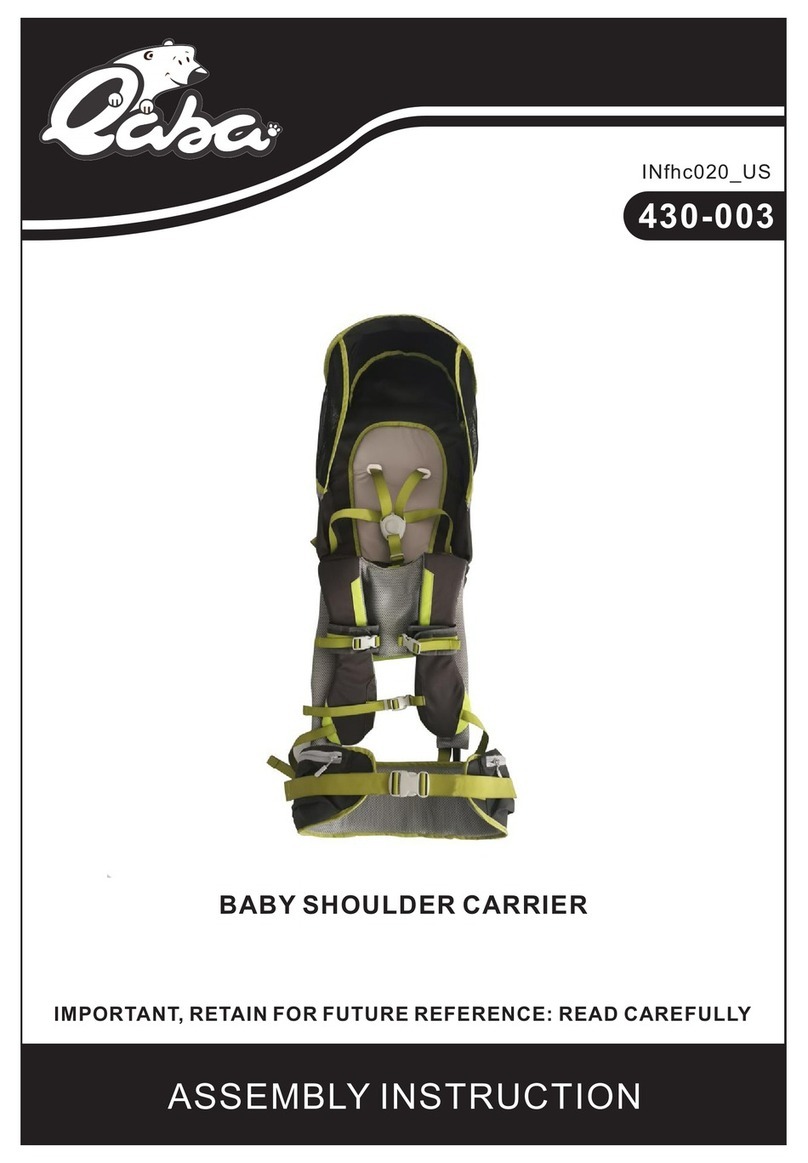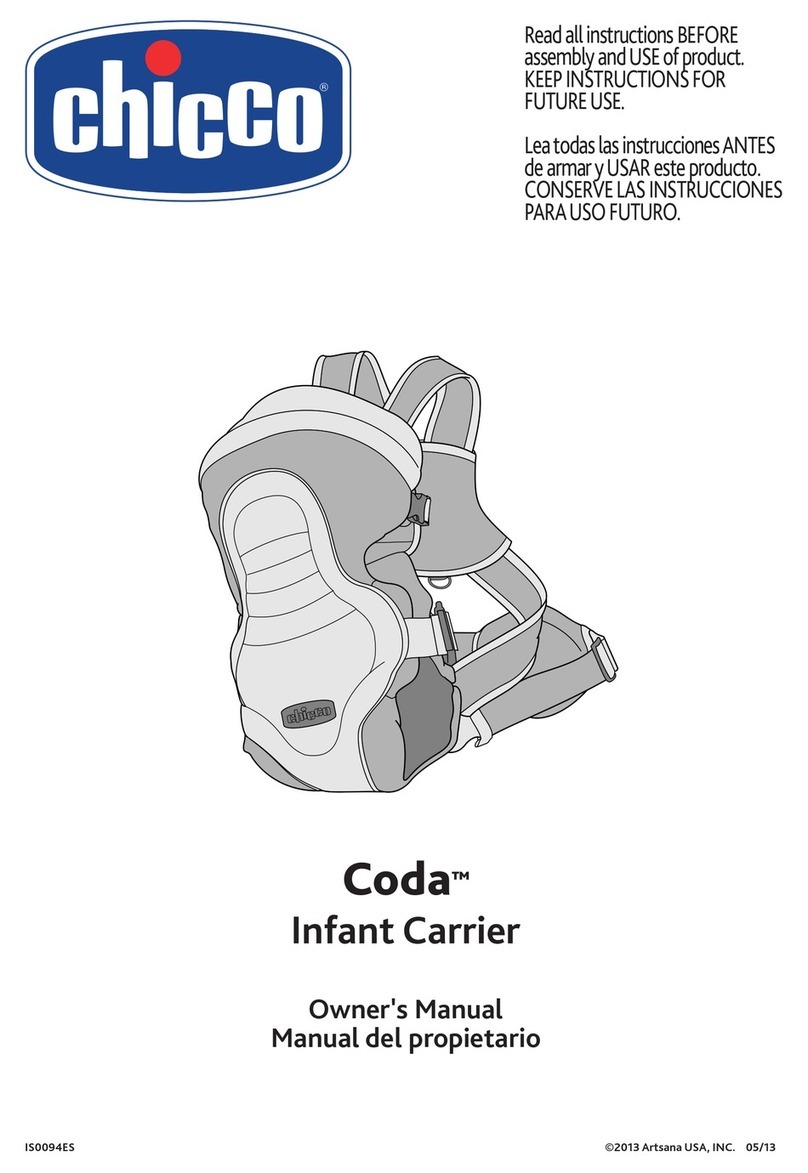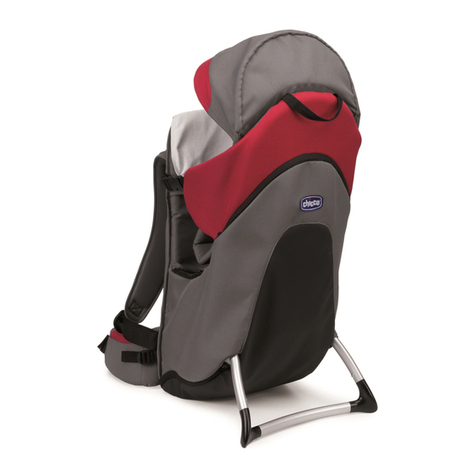
6
Ab wann kann ich mein Baby im HOP-TYE
Buckle tra en?
Im Prinzip vom 1. ag an (Mindestgewicht
ca. 2,5 kg), wenn keine Krankheiten oder
körperlichen Behinderungen vorliegen. Falls
doch, sollte das ragen im HOP- YE Buckle
mit dem Arzt oder Physiotherapeuten abge-
sprochen werden.
Wie lan e kann ich mein Baby im HOP-TYE
Buckle tra en?
Du kannst Dein Baby so lange tragen, wie es
dem Baby und Dir gefällt – max. bis zu einem
Gewicht von 20 kg.
Kann ich auch noch mit dem Tra en anfan en,
wenn mein Baby schon älter ist?
Auf jeden Fall! Es kann jedoch sein, dass sich
Dein Baby erst wieder an die neue Enge ge-
wöhnen muss. Das verlangt von beiden Seiten
manchmal etwas Geduld. Auch Du solltest
die ragezeiten langsam steigern. Je später
Du anfängst, desto schwerer ist das Baby und
Deine eigene Muskulatur muss sich allmählich
an das neue Gewicht gewöhnen.
Ist das Tra en nicht schädlich für den Rücken
(des Babys und des Trä ers)?
Die Wirbelsäule des Säuglings ist von Natur
aus rund und muss sich erst langsam (ca. 1
bis 2 Jahre) strecken, um die S-Form des Er-
wachsenen zu erhalten. Deshalb muss der
Babyrücken im HOP- YE Buckle auch leicht
gerundet sein (durch die Spreiz-Anhock-
Haltung). Falls Du jedoch akute Rücken -
probleme, wie z. B. Bandscheibenvorfälle
o. ä. hast, sprich auf jeden Fall vor dem
ragen noch einmal mit Deinem Orthopäden
oder Krankengymnasten!
Verwöhne ich mein Kind, wenn ich es zu oft
tra e?
Nein! Du kannst ein kleines Wesen, das nur
durch Schreien (Kontaktweinen) auf sich
aufmerksam macht, nicht verwöhnen, wenn
Du es trägst. Der Wunsch nach Nähe, Kontakt
und Geborgenheit ist eines unserer Grund-
bedürfnisse und sollte einfach und selbst-
verständlich befriedigt werden. Spätestens
wenn die Kleinen anfangen zu krabbeln oder
zu laufen, wollen sie nicht mehr so oft in die
ragehilfen. •
When can I start to carry my baby
in a HOP-TYE Buckle?
In principle, from the first day (minimum
weight approx. 5.5 lbs) onwards, provided
that no illnesses or physical disabilities exist.
Should illnesses or physical disabilities exist,
please consult your doctor or physiotherapist
prior to carrying your child in the HOP- YE
Buckle.
How lon can I carry my baby in a HOP-TYE
Buckle?
You can carry your baby as long as you and
your baby enjoy carrying and being carried –
max. up to a weight of 44.1 lbs.
Can I start carryin by means of HOP-TYE
Buckle even if my baby is already a little older?
Of course! However, your baby may have to
grow accustomed to the new feeling of con-
finement. his may require a little patience
from both sides. In this case, you should
also gradually increase the carrying time.
he later you begin, the heavier your baby
will be and your own musculature must
gradually get used to the new weight
distribution.
Does carryin cause dama e to the back
(both baby and mother)?
An infant’s spine is naturally rounded and
needs to stretch gradually over one or two
years in order to obtain the s-shape of an
adult’s spine. hus, the baby’s back also needs
to be slightly rounded inside a HOP- YE
Buckle (due to the spread-squat position).
However, if you have acute back problems
such as a slipped disc or similar, you should
at all events consult your orthopaedic
specialist or physiotherapist prior to carrying.
Will I spoil my child by carryin it too often?
No! You cannot possibly spoil a little being
that can only attract your attention by crying
(contact crying) if you carry it. he want for
closeness, contact and security is one of our
basic requirements and should be quite sim-
ply and naturally satisfied. When the little
ones start crawling or walking, at the very
latest, they will no longer want to be carried
around in carrying aids that often. •
1. À partir de quand puis-je porter mon bébé
en HOP-TYE Buckle ?
En principe dès le premier jour (poids minimal
2,5 kg env.) si l’enfant ne souffre d’aucune
maladie ou handicap physique. Sinon, parlez
à votre médecin ou kinésithérapeute du
portage avec HOP- YE Buckle et demandez
leur conseil.
Combien de temps puis-je porter mon bébé en
HOP-TYE Buckle ?
Aussi longtemps que cela plaît au bébé et
aux parents – max. jusqu’à un poids de 20 kg.
Puis-je commencer à porter mon bébé même
s’il a déjà un â e plus avancé ?
Absolument ! Il se peut cependant que le bébé
doive d’abord s’habituer à ce nouvel espace
réduit. Cela demande parfois un peu de
patience des deux côtés. Pour les parents
aussi, les durées de portage doivent être
augmentées petit à petit. En effet, plus vous
commencez tard, plus le bébé est lourd et
plus votre musculature doit s’habituer
progressivement à ce poids nouveau.
Le porta e est-il mauvais pour le dos
(du bébé et de celui qui le porte) ?
La colonne vertébrale du nourrisson est
naturellement arrondie et doit s’étirer
lentement (1 à 2 ans) pour atteindre la forme
en S de la colonne adulte. C’est pourquoi le
dos du bébé doit aussi être légèrement arrondi
en HOP- YE Buckle (position de la grenouille).
Si vous souffrez de graves problèmes de dos
de type hernie discale, mieux vaut dans tous
les cas demander conseil à votre orthopédiste
ou kinésithérapeute avant de commencer le
portage.
Est-ce que je âte mon enfant en le portant
trop souvent ?
Non ! Ce n’est pas gâter ce petit être qui n’a
que ses cris pour attirer l’attention (pleurs
destinés à entrer en contact) que de le
porter. Le désir de proximité, de contact et
de sécurité est un besoin fondamental
qu’il convient de satisfaire simplement et
naturellement. C’est au plus tard lorsque
les enfants commencent à marcher à quatre
pattes ou à se mettre debout qu’ils ont moins
envie d’être portés dans un auxiliaire de
portage. •
Die häufi sten Fra en und Vorurteile
Frequently asked questions and prejudices
Questions et préju és les plus courants
